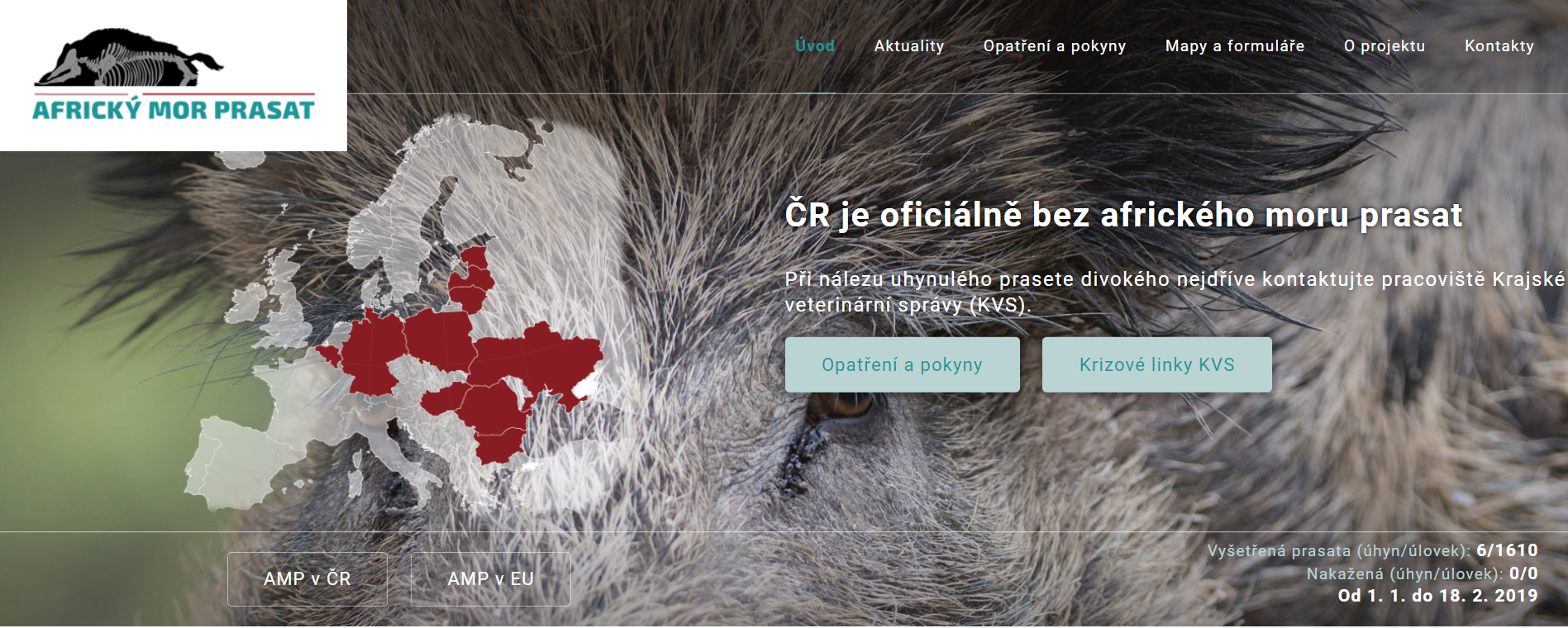Experience with African swine fever in the Czech Republic
Ivan Řezáč, Sano, Czech Republic
Facts and figures:
- 26.6.2017- the first confirmed infected pig was found in the Czech Republic
- 400 km - distance of the (officially) nearest area with proven African swine fever from the Czech Republic
- 38 km - length of the odour fence installed around the high-risk area
- 12 km - length of the electric fence installed around the epicentre of the infection
- 212 animals - total number of animals with proven African swine fever infection in the Czech Republic
- 0 pigs on farms were infected
- 19.4.2019 - the OIE declared the territory of the Czech Republic free from African swine fever
The Czech Republic succeeded in ridding its territory of African swine fever infection. The steps taken over time are described below.
However, it is very important to mention the outstanding coordination between the State Veterinary Administration and the Ministry of Agriculture, the police (snipers), farmers and hunters. The State Veterinary Administration in the Czech Republic requires a large number of permits from farmers, keeps records and consistently controls the administration of antibiotics, etc.
This is not the first time that the State Veterinary Administration has reacted very quickly and correctly; in the past, it has also achieved success in controlling foot and mouth disease, for example.
Step 1:
The situation was resolved at national level. Websites were created and each regional veterinary administration had a crisis hotline set up. The infected area had been identified to prevent the spread of the disease. Hunting and feeding in the infected area were banned, an inventory of domestic pig farms was undertaken (until then it was mandatory to register more than 1 domestic pig), a ban on their transport and a number of biosecurity measures were implemented on farms throughout the Czech Republic to keep wild boars from entering farm buildings containing pigs.
Step 2:
The infected area and also the high-risk area at its centre (all ASF cases) were identified. The intensive catch area was defined as a buffer area around the infected area, where all wild boars caught were examined for ASF. The strictest regime was introduced in the so-called high-risk area. Most of this area was surrounded by electric and odour fences, with a ban on entry by unauthorized persons and a total ban on hunting being imposed.
Later on, individual hunting and trapping of wild boars were gradually permitted under strict biosecurity conditions. All caught and dead feral pigs (intensive search) were safely disposed of in a sanitation plant, where they were necropsied and sampled by the official veterinarian and subsequently examined for ASF. The payment of shotguns and finders was used to motivate hunters to intensively catch wild pigs and search for dead animals. Police snipers, who used thermal imaging and helicopters in the infected area, also helped the hunters to catch wild pigs in this area. They were mostly hunted at night.
Step 3:
Press conferences and discussions with breeders and hunters in the affected district were organised directly with members of the veterinary administration.
The ban on feeding kitchen waste and the ban on entering farms for people who could have come into contact with feral pigs were enforced. Citizens were prohibited from entering the risk areas. In the infected area, the harvesting of crops was banned in order to preserve the food source for feral pigs and to enable them to hide.
Step 4:
Through these extraordinary veterinary measures, intensive hunting of feral pigs of all ages was ordered throughout the Czech Republic, with the possibility of using otherwise prohibited hunting methods. In the infected area and the so-called intensive catch area (approx. 8,500 km2 in Moravia and Silesia), payments were offered for shotguns; these payments were graded according to the risk level of the areas and individual categories of feral pigs. Traps were also used to catch wild boars.
Step 5:
A ban on imports of wild boar trophies from ASF countries and a ban on the use of hay and straw from ASF countries on farms came into force. An information campaign aimed at international carriers, traders and tourists as well as airport checks were implemented.
Guidance:
- Some owners did not want to allow the construction of an electric fence over their land - the legislation requires changing
- There was no way to compensate for the losses caused by the ban on harvesting in the fields
- Police snipers did not follow the hunting ethic
- Tall grass and snow limited the functionality of electric fences
- Stressed game can get through the fences and damage them
Reporting suspected deaths of feral pigs is still mandatory in the north of the Czech Republic, and rewards are paid for wild boars that are caught in order to reduce their numbers.




